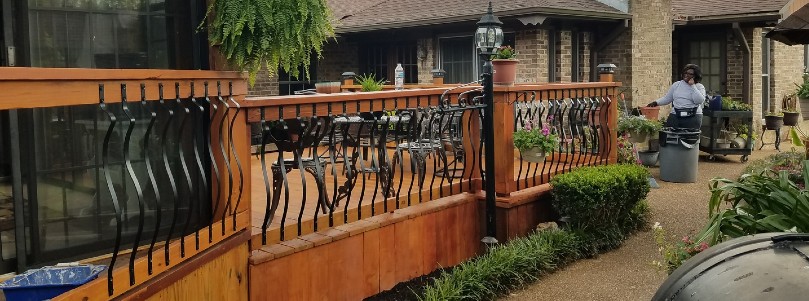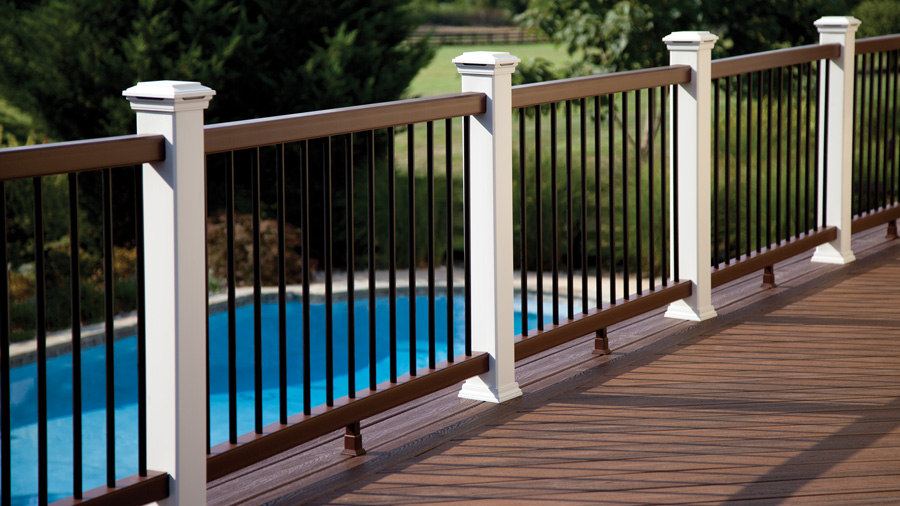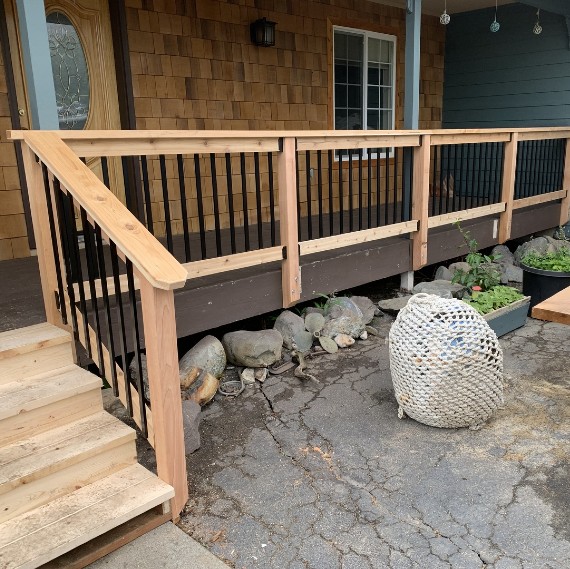How Tall Does My Deck Railing Need To Be To Meet Building Code?
When planning your family's new outdoor space, it's easy to get caught up in the big decisions. Does your backyard feel like a timeless metal railing system or more like a sleek stainless steel cable railing line? Does your deck have a clear, open vibe that works with glass panel deck railing; or do you want customizable railing options like those offered with composite railing brands?
Here are the general rules of thumb for standard deck railing heights based on building codes across the United States.
Does My Deck Need a Railing?
Before we discuss the proper height of deck railing, it would be good to determine if your deck even needs a railing. The International Residential Code (IRC) only requires railings on decks more than 30 inches above the ground. Your local building code may have different requirements, and you may feel safer having a railing regardless of how high your deck is off the ground. A fall from 30 inches could still cause injuries.
What Is the Deck Railing Height Code
The standard deck railing height is a minimum of 36 inches, measuring from the top edge of the top rail down to the deck surface. This applies to the broad majority of the United States for all residential decks, though a few states have different requirements.
In certain areas of the country, such as California and Washington, deck railing must reach a height of 42 inches above the deck surface. You'll also need to meet the higher 42-inch railing requirement for commercial decks and balconies like those attached to restaurants, bars, museums, multi-family homes, condos, or any deck on a third story or higher.
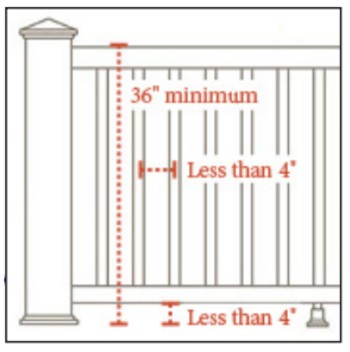
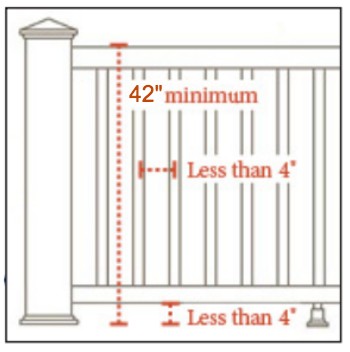
Deck Stair Railing Height Requirements
While standard deck railings typically require a minimum height of 36 inches, stair railings follow slightly different guidelines. Most building codes specify a deck stair railing height between 364 and 38 inches, measured vertically from the leading edge of the stair tread to the top of the handrail.
This height range ensures that the railing provides proper support while allowing for a comfortable grip as users ascend or descend. Some local codes may have variations, so it’s always best to verify requirements with your building authority before installation. Proper stair railing height is crucial for safety, preventing falls while maintaining accessibility.
Baluster Spacing Guidelines
Beyond the standard railing height for a deck, building codes also dictate how far apart balusters (also called spindles) should be spaced to enhance safety. These regulations are in place to minimize hazards, particularly for pets and young children who might try to squeeze through gaps or get stuck.
According to the IRC, no opening in the railing system should allow a 4-inch sphere to pass through. This rule applies across all sections of the railing, including gaps between balusters, between a baluster and a post, and beneath the bottom rail. However, stair railings allow slightly larger spacing—up to 4-3/8 inches between balusters and posts. Additionally, the triangular opening formed where the bottom rail meets the stair tread and riser must be small enough to block a 6-inch sphere.
Choosing the Right Deck Railing Height
While building codes typically require railings that are at least 36 inches high for decks more than 30 inches off the ground, other factors might influence your decision on your deck railing height. In some cases, adding a railing to a lower deck—while not technically required to have one—can improve safety, especially if the ground below is a hard surface like concrete. Homeowners with young children, elderly family members, or individuals with mobility concerns may also find that adding a railing to a lower deck provides extra security and peace of mind.
In certain scenarios, a railing taller than the standard 36 inches may be the better option. Many areas - including much of California - require 42-inch railings. If your deck features built-in seating, planters, or other structures that children might climb on, a higher railing can help prevent potential falls. Additionally, some homeowners opt for taller railings or even partial walls to create more privacy, reduce wind exposure, or block out noise from nearby streets or neighbors. The right deck railing height ultimately depends on more than just code compliance—it’s about balancing safety, functionality, and looks to create a comfortable and secure outdoor space.
Frequently Asked Questions
A well-built deck railing does more than meet code—it enhances safety, durability, and the overall look of your outdoor area. Whether you're planning a new installation or upgrading an existing railing, these frequently asked questions will help you make informed decisions.
What's the best way to secure railing posts to my deck?
Railing posts should be attached directly to the deck framing using through-bolts and washers, not just lag screws. Adding blocking between joists at each post location provides extra reinforcement, helping to prevent movement or instability over time.
Can I install a deck railing myself, or should I hire a professional?
It depends on your skill level and the complexity of the railing system. Pre-assembled railing kits are relatively straightforward for DIYers, but custom or code-compliant railings may require precise measurements, proper hardware, and structural reinforcement—making professional installation a safer choice in some cases.
Can I mix different railing materials on my deck?
Yes! Many homeowners blend materials for a custom look. For example, a wooden deck with metal balusters offers a classic yet modern aesthetic, while glass panel railings combined with wood or composite posts provide an open, unobstructed view. Just ensure that all materials are compatible with your deck's structure and meet code requirements.
Knowledge Center
Tips and tricks on deck building and designing from the experts here at DecksDirect!


